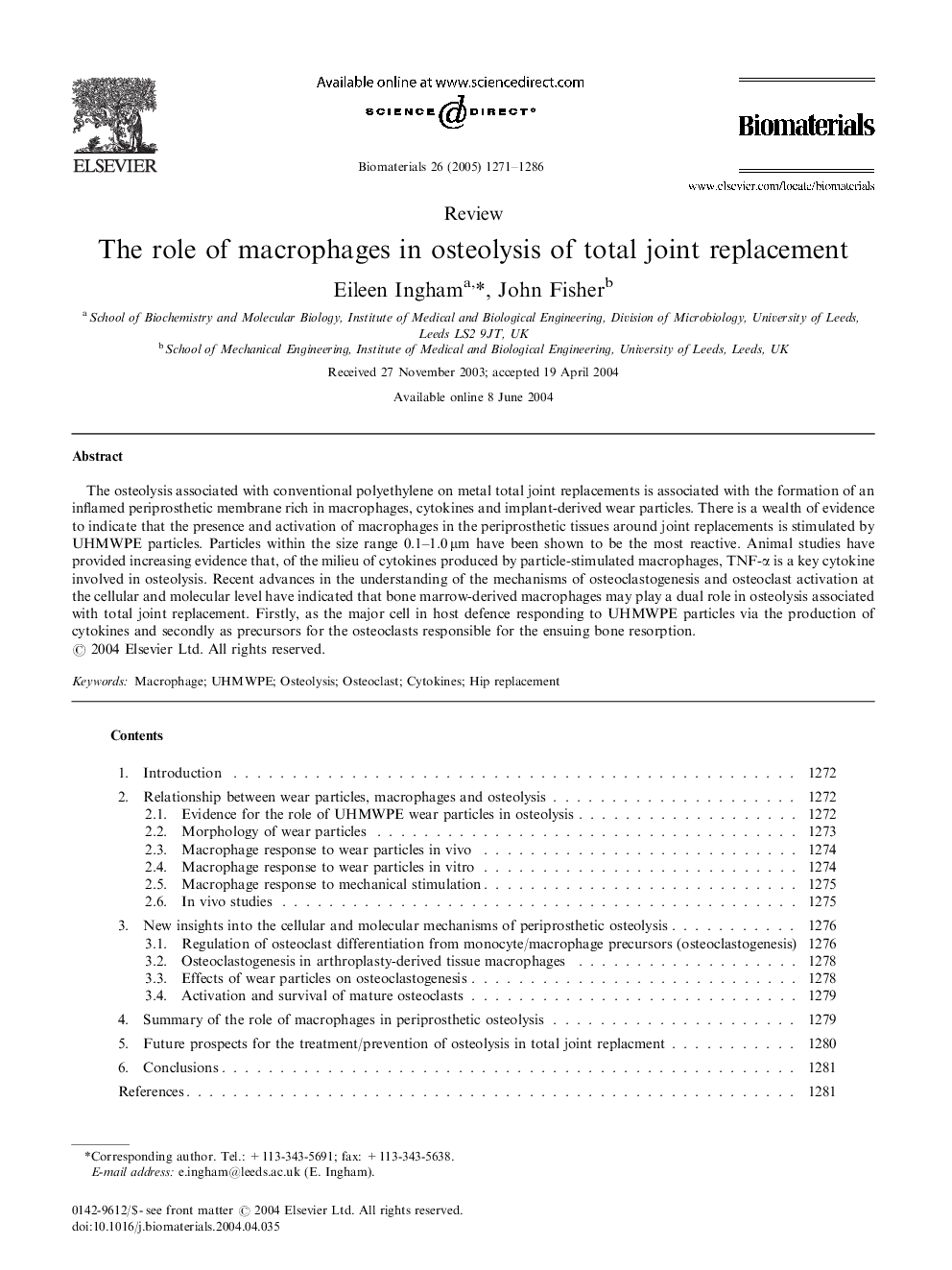| Article ID | Journal | Published Year | Pages | File Type |
|---|---|---|---|---|
| 10230101 | Biomaterials | 2005 | 16 Pages |
Abstract
The osteolysis associated with conventional polyethylene on metal total joint replacements is associated with the formation of an inflamed periprosthetic membrane rich in macrophages, cytokines and implant-derived wear particles. There is a wealth of evidence to indicate that the presence and activation of macrophages in the periprosthetic tissues around joint replacements is stimulated by UHMWPE particles. Particles within the size range 0.1-1.0 μm have been shown to be the most reactive. Animal studies have provided increasing evidence that, of the milieu of cytokines produced by particle-stimulated macrophages, TNF-α is a key cytokine involved in osteolysis. Recent advances in the understanding of the mechanisms of osteoclastogenesis and osteoclast activation at the cellular and molecular level have indicated that bone marrow-derived macrophages may play a dual role in osteolysis associated with total joint replacement. Firstly, as the major cell in host defence responding to UHMWPE particles via the production of cytokines and secondly as precursors for the osteoclasts responsible for the ensuing bone resorption.
Related Topics
Physical Sciences and Engineering
Chemical Engineering
Bioengineering
Authors
Eileen Ingham, John Fisher,
